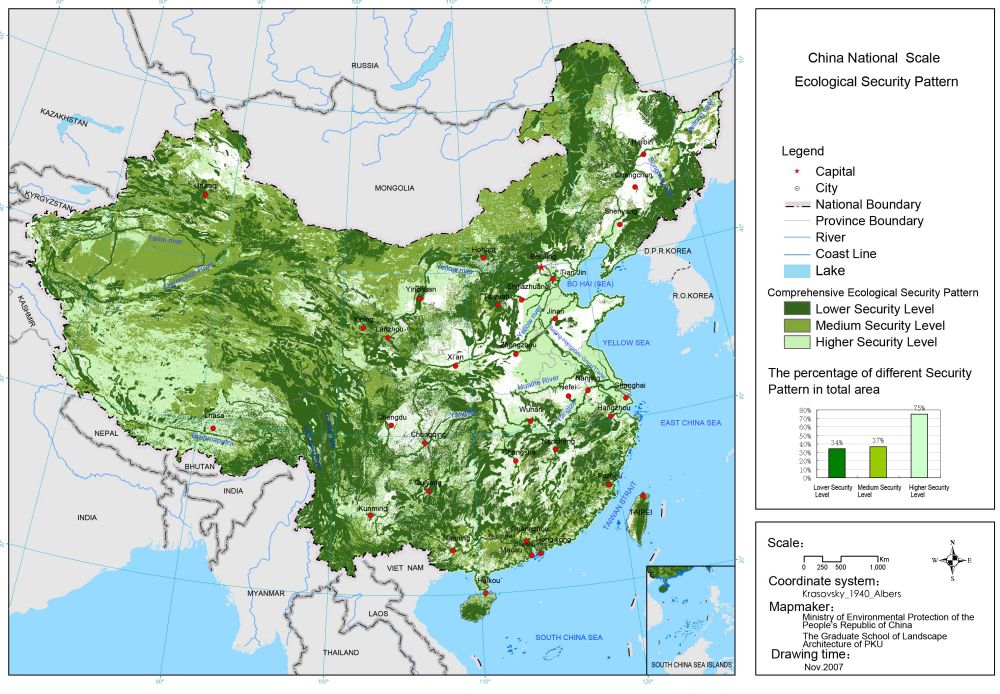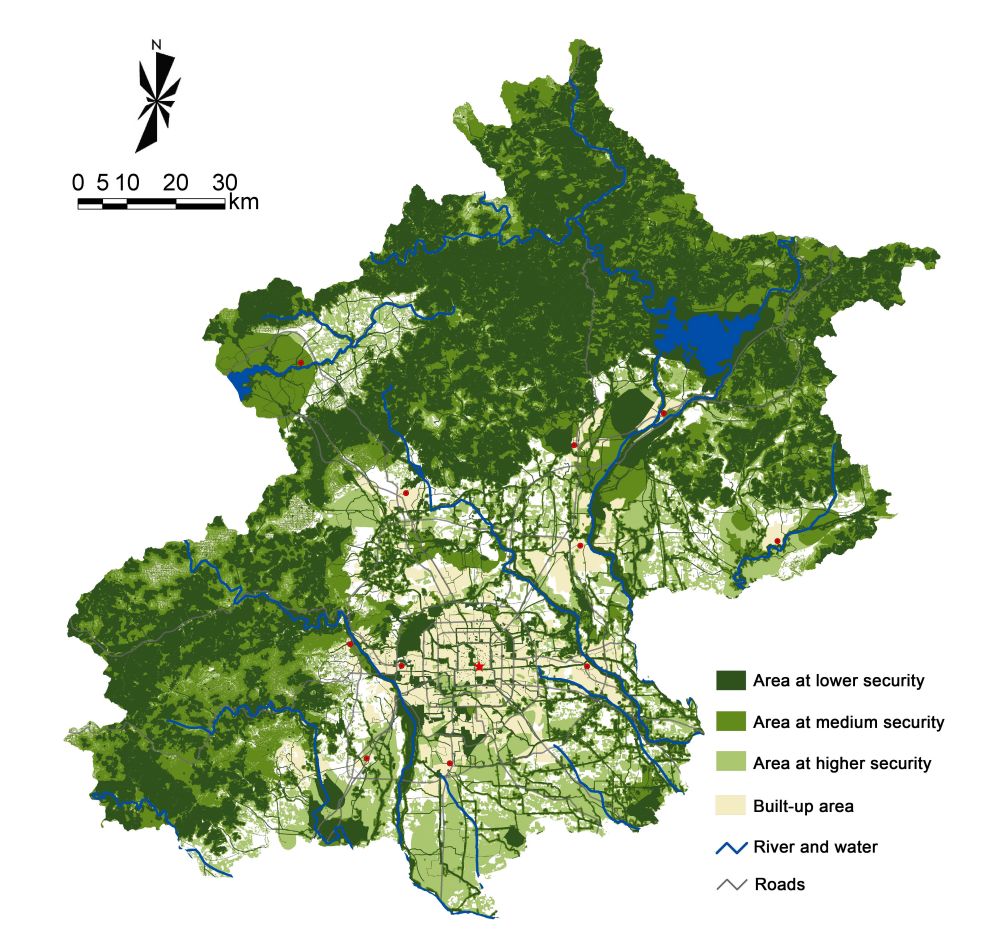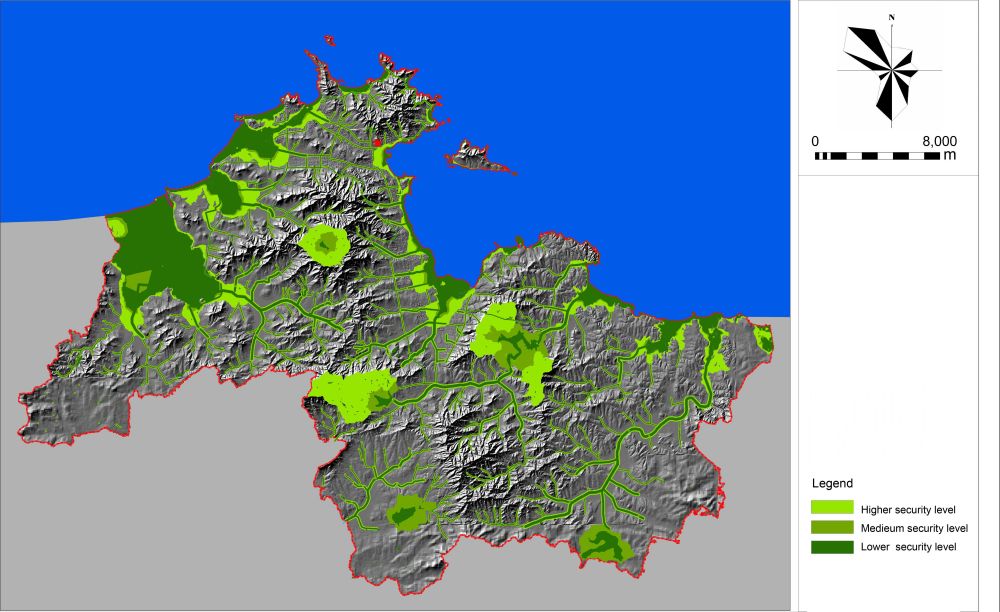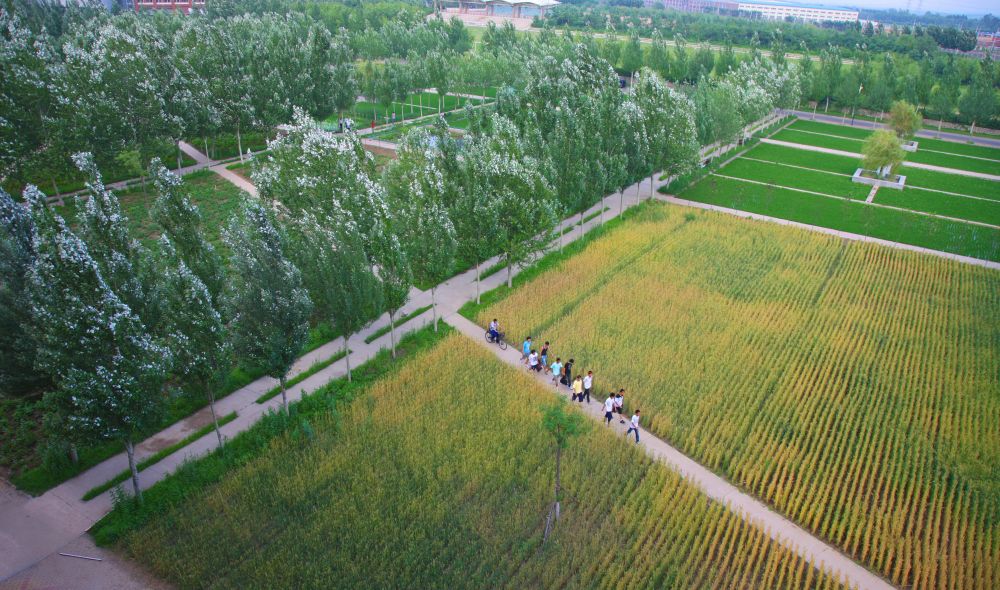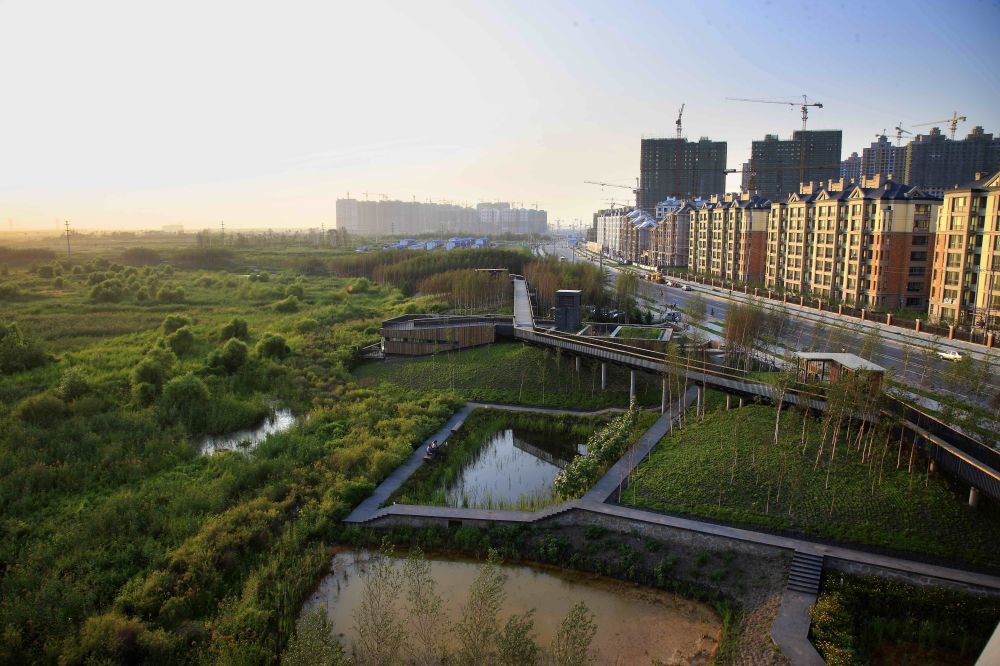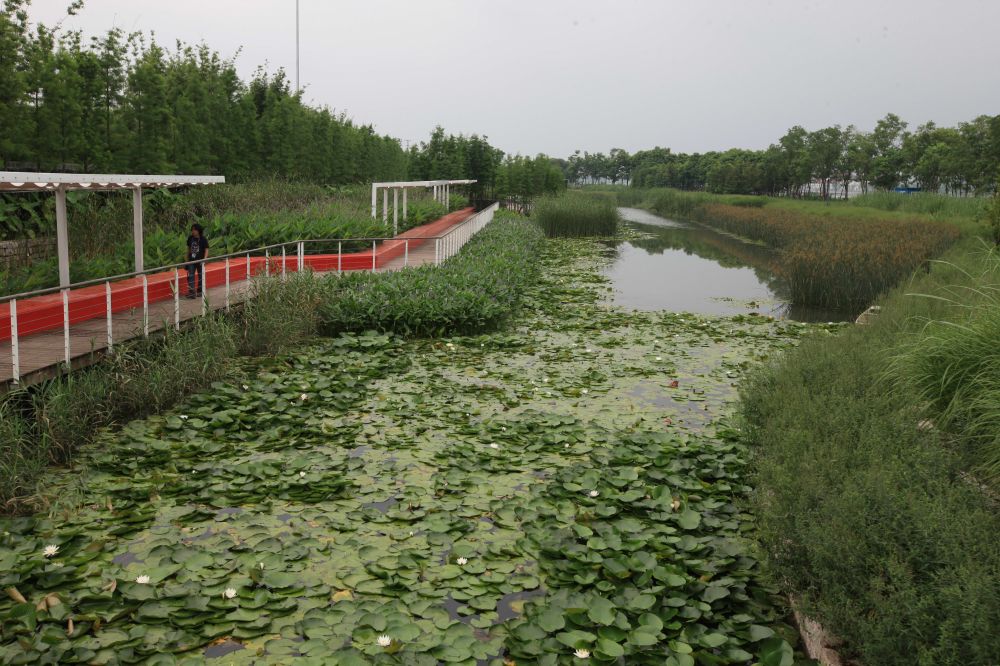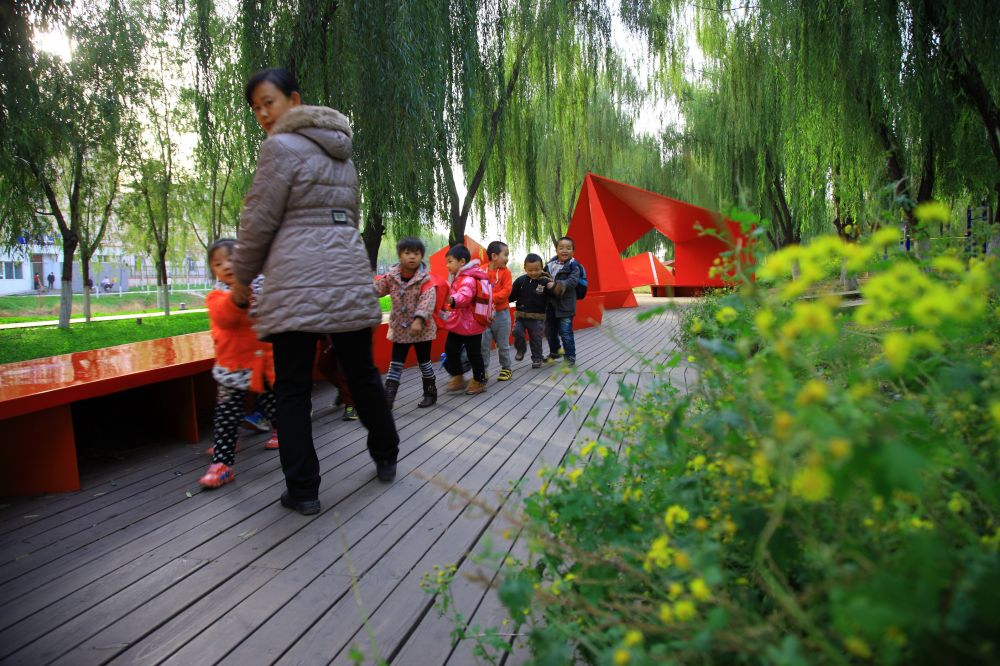Designing New Hydrological Infrastructures
- 摘要:
- Designing New Hydrological Infrastructures
文献来源:Yu K. Designing New Hydrological Infrastructures[J]. Lotus International, 2014, 155(155):28-31.
The water issues modern cities are facing today are multifaceted and complicated: drought, floods, pollution, drops in groundwater levels, property damage, and so on. These climatic situations exist globally, but are particularly common in China where 20 percent of world's population lives with less than 10 percent of the world's fresh water available. Most of the Chinese population inhabit monsoon climate regions, meaning too much water during the rainy season causing flooding and urban inundation, and scarce rainfall in the other seasons causing drought. Based on research, over 70%of the 1.3 billion Chinese population, and over 70%of the nation's Gross Domestic Product, are concentrated in the flood plain(Yu,2012).In just one day, on July 21,2012,seventy-seven lives were lost due to flooding in the city's streets and the overflow of rivers on the outskirts of Beijing. Meanwhile, over 400 out of approximately 660 Chinese cities suffer from water shortages. Most of the cities' groundwater levels drop significantly, and Beijing's groundwater level has dropped by over one meter every year for the past thirty years, since the mid-1980s, with increased urbanization;75%of the surface water in China is polluted and more than half of the wetland habitats have relocated over the past fifty years.
While the natural condition of water resources, rapid urban development and even climate changes are the common explanations for these water issues, my position and that of Turenscape is different. We believe that the conventional grey hydro-infrastructure is the major cause of these water disasters. While water making the recharging of groundwater impossible and cause the degradation and relocation of wetland habitats. Immense aqueducts have been planned and built that conduct water from wet southern to dry northern China, which actually only intensify local water problems and cause them to become regional or even national, worsening the overall water system across the scale. Increasingly intricate and expensive water-treatment instruments and techniques have been invented and implemented, but are these costly facilities able to purify the 75%of the polluted surface water in rivers and lakes, largely caused by non-specific sources? And, ironically, these so-called “pollutants" and "waste' materials were highly valued as nutrients and fertilizers by farmers just decades before! It is essential to find alternative solutions, and these solutions must be integral and systematic. Namely, we need a holistic alternative hydro infrastructure, an eco-hydro-infrastructure that will play a key role in recovering and healing the water ecosystem that provides multiple ecosystem services including provisioning, regulating, life-supporting and cultural and spiritual services. This new hydro-infrastructure must be able to function as: 1)a green sponge that has the resiliency to adapt to seasonal changes of rainfalls and which will slow down (instead of speeding up)the water flow that will recharge the aquifer and nurture the habitats on the ground; 2) a living system that is able to cleanse itself through the functioning of the ecosystem and keep itself healthy; 3)a productive habitat that reunites the broken nutrient cycle and turns the pollutants into nutrients for agricultural crops and biodiversity;4)a sensitive cultural and spiritual entity that is not only productive and ecologically functional, but can also be integrated with the protection of the cultural heritage, recreational use, and must be beautiful and loved and cared for by the people. This new hydro-infrastructure must be planned and designed across the board, at the national and regional scales, as well as local specific sites. The research group of the Graduate School of Landscape at Peking University, and the Turenscape practice, over the past seventeen years have proposed the National Ecological Security Pattern and Eco-Hydro-Infrastructure for the central government to consider an alternative water management system. The Ministry of Water Resources, the Ministry of Land Resources and the Ministry of Environmental Protection have gradually accepted the concept and methodology. Several regionally water-based ecological infrastructures have also been proposed for Beijing, Taizhou in Zhejiang Province, Shuining in Sichun Province, Weihai in Shandong Provinces. As demonstrations and tests of the concept of a New Hydro-Infrastructure, Turenscape has designed and built many projects in different cities presenting various hydrological conditions. Each project may emphasize one or two major issues,including:the productive use of water (such as the case of Shenyang Jianzhu University's rice campus, where rainwater is collected to use for rice cultivation);the green sponge for a water resilient city (such the Qunli Stormwater Park.in Harbin, where the urban stormwater is collected and filtered to recharge the aquifer and nurture a wetland park right in the middle of the city);the wetland landscape as a living system to cleanse the polluted river water (such as the Shanghai Houtan Park that demonstrates how a 3-hectare constructed wetland is designed to produce 2,400 cubic meters of clean water daily);the eco-hydro-infrastructure as a recreational greenway (such as the case of Sanlihe Green Way in Hebei's Qian'an City, where the degraded mother river has been restored to become a celebrated recreational corridor in the middle of the city).
Though each of these projects has focused on one or two aspects of the functions of the eco-hydro-infra-structure, the solutions are all systematic and holistic. The projects mentioned here below describe some examples of comprehensive and integral approaches to design and building eco-hydro-infrastructures on a site-specific scale. The Liupanshui Minghu Wetland Park is part of the overall eco-hydro-infrastructure for Liupanshui City. It is designed as a green sponge to slow down the water flow to regulate water throughout the rainy and dry seasons, filtrate and cleanse the polluted water, recover native habitats and integrate recreational uses; the Harbin Cultural Center Wetland Park is designed as a water resilient green space that is adapted to fluctuating water levels and accessible for recreational use. It also functions as a water quality remediating area; Qiuaoyuan Park is a relatively small area in the center of Tianjin city, which is designed as an observable test ground for designed ecologies and as agreen sponge to retain rainwater to remediate the soil, recovering the native habitats and to be intensively used by the people. Through planning strategies, we intend to create new eco-hydro-infrastructures by allocating spaces on the ground as a pre-condition for the urbanization and development plan, or as a blueprint for the remediation of the existing hydro-infrastructure; through designing and building representative projects at specific sites, we intend to test the ecological engineering solutions and models that can be replicable at all scales. For over seventeen years Turenscape has carried out over 1,300 planning and design projects aimed at new eco-hydro-infrastructures in over 200 cities nationwide (and beyond).We call this a "Big Foot Revolution" for an alternative hydro-infrastructure that is healthy, resilient, productive, life supporting and beautiful.
